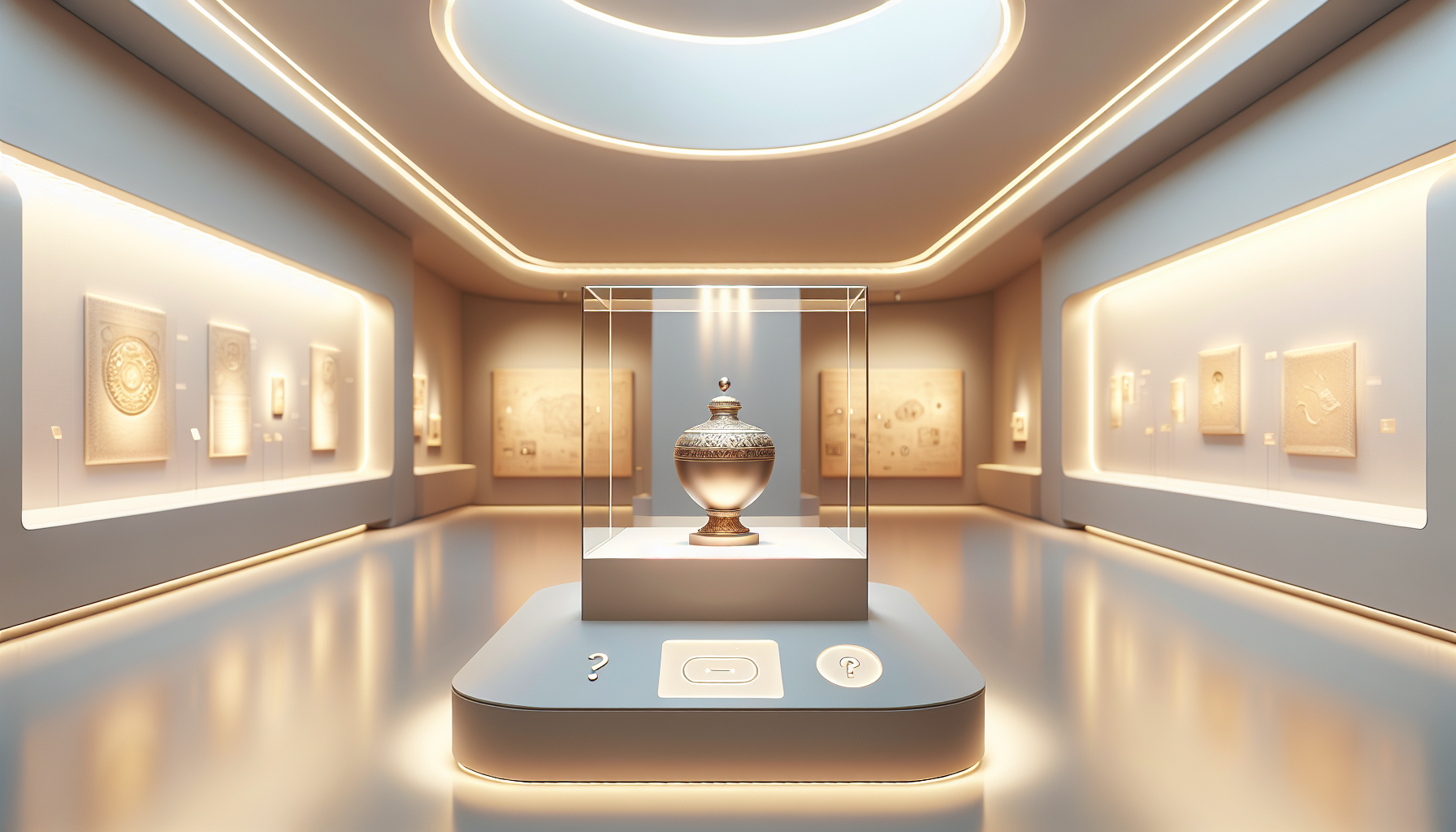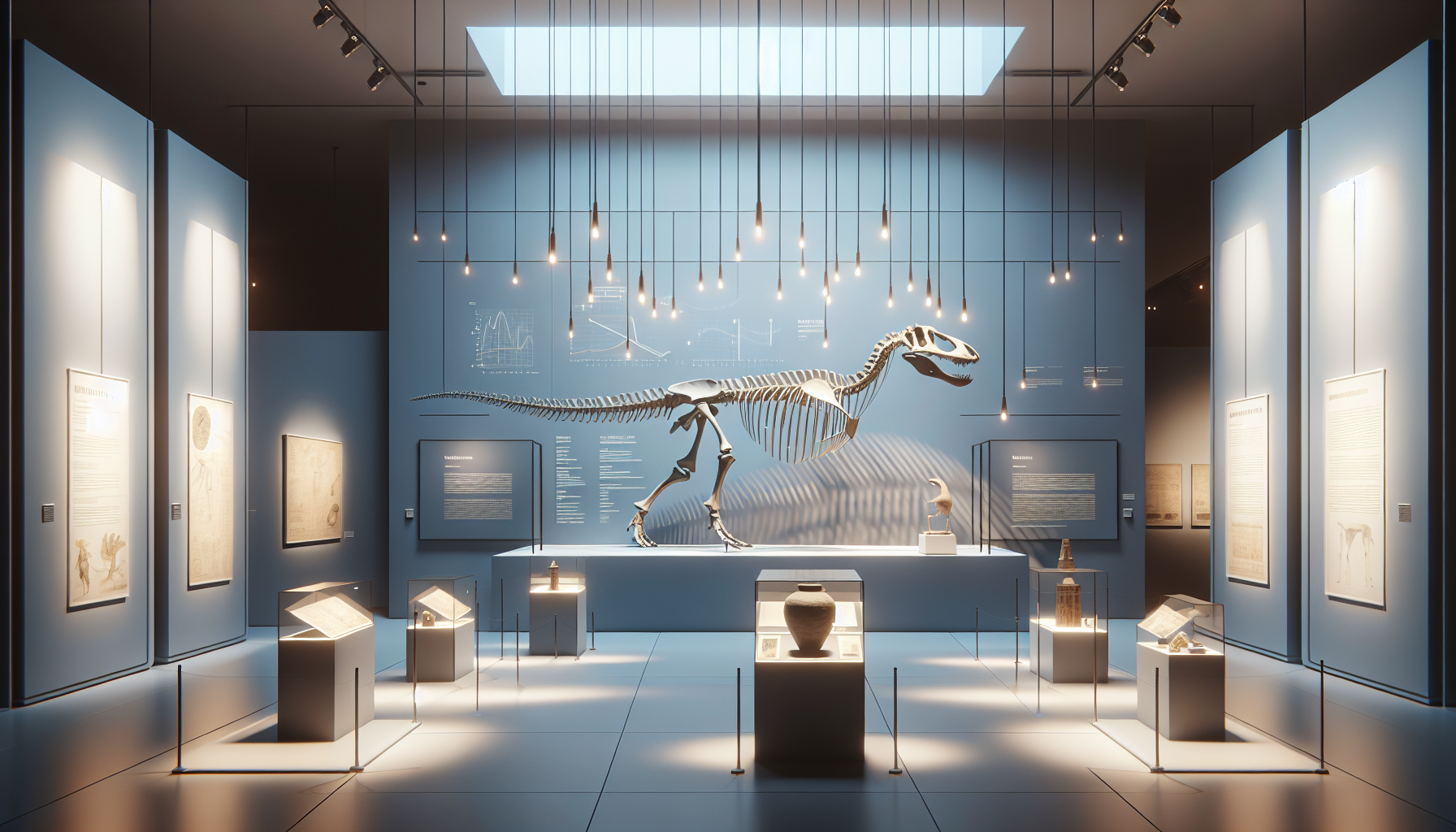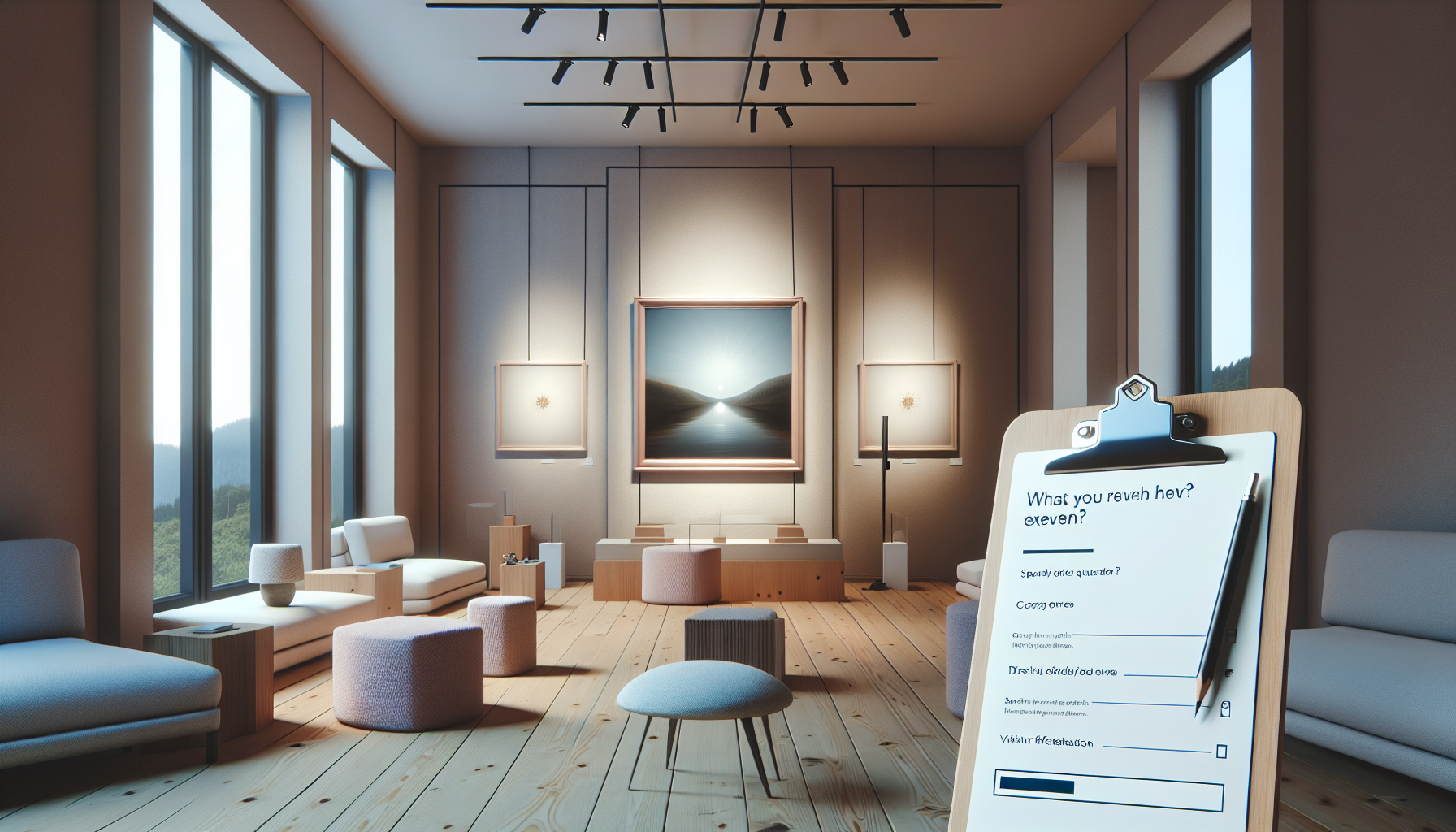Creating an engaging museum exhibit can feel like a daunting task, especially with so many elements to consider—from themes to layouts. You might be wondering how to bring your ideas to life in a way that captivates visitors and educates them at the same time. It’s a common challenge, and you’re definitely not alone in this!
But fear not! If you stick around, I’ll share some fantastic prompts tailored for maximizing your museum exhibit design using ChatGPT. You’ll discover ways to craft themes, enhance interactivity, and even gather valuable feedback—all with a few clever questions.
Get ready to dive into a world of creativity and innovation. From sparking unique ideas to creating visitor-centric experiences, we’ve got you covered with prompts that can transform your exhibit from ordinary to extraordinary!
Key Takeaways
- Use ChatGPT to brainstorm innovative themes and interactive activities for your museum exhibit.
- Incorporate hands-on learning stations, technology, and collaborative zones for a dynamic visitor experience.
- Design your exhibit layout to optimize visitor flow and engagement, balancing open areas with intimate spots.
- Create educational content that aligns with your theme to enhance learning and engagement.
- Gather visitor feedback to continuously improve the experience and cater to audience needs.

Effective Prompts for Museum Exhibit Design
Designing an engaging museum exhibit requires creativity and thoughtful planning.
Using ChatGPT can help streamline the process by generating ideas and prompts tailored to various aspects of exhibit design.
Here are some effective prompts to kickstart your museum exhibit project:
- Create five innovative and interactive exhibit concepts focused on local history.
- List ten engaging activities that encourage visitor participation in an art exhibit.
- Suggest three thematic approaches for a science exhibit aimed at children aged 8-12.
- Outline a unique timeline laying out the development of a specific cultural movement for display.
- Generate ideas to showcase minority artists and their contributions to contemporary art.
These prompts can guide the brainstorming process, ensuring a visitor-centric design.
How to Use ChatGPT for Museum Exhibit Planning
Want to leverage AI in your museum exhibit planning?
ChatGPT can assist with everything from ideation to layout, ensuring that your exhibit captures the essence of what you want to convey.
Follow these steps to make the most of ChatGPT:
- Start by defining your exhibit’s theme or focus area and input it into ChatGPT.
- Request suggestions for engaging activities that align with your exhibit goals.
- Ask for layouts that optimize space and flow for visitor navigation.
- Utilize prompts to generate marketing content for your upcoming exhibit.
- Finally, solicit feedback strategies from ChatGPT to understand visitor experiences post-visit.
With these steps, you’ll be on your way to creating an engaging and thoughtful exhibit.
Sample Prompts for Creating Engaging Exhibit Themes
Creating a compelling exhibit theme can captivate visitors and encourage deeper engagement.
Here are some sample prompts to help develop creative themes for your museum exhibits:
- Generate a list of five exhibit themes based on current social issues.
- Propose three emotionally charged stories that can be illustrated through artifacts.
- Describe ten culturally relevant themes suitable for a traveling exhibition.
- Suggest interactive elements that could enhance an exhibit on environmental conservation.
- Create an immersive experience theme around ancient civilizational innovations.
These prompts focus on storytelling and relevance, which helps in forming strong visitor connections.
Ideas for Designing Interactive Museum Experiences
Interactivity can significantly enhance visitor engagement in museum exhibits.
When designing interactive museum experiences, consider these principles and ideas:
- Incorporate hands-on learning stations that allow visitors to explore and experiment.
- Use technology such as augmented reality to superimpose digital information over physical artifacts.
- Design gamified elements that encourage exploration through challenges or scavenger hunts.
- Encourage visitor participation by providing opportunities for audience-generated content.
- Set up collaborative zones where visitors can contribute ideas or artwork to the exhibit.
These ideas can create a more dynamic and engaging museum experience, making learning fun and memorable.

Prompts to Generate Educational Content for Exhibits
Creating educational content for museum exhibits is essential to enhance visitor learning experiences.
ChatGPT can help you generate effective educational materials that are aligned with your exhibit’s goals.
Here are some useful prompts you can use:
- Generate a list of five educational objectives for a natural history exhibit.
- Create engaging signage text to explain the significance of key artifacts in an ancient civilization exhibit.
- Outline five interactive questions visitors can answer at different stages of an art exhibit.
- Suggest multimedia content ideas to enhance the educational value of an exhibit on climate change.
- Propose methods for integrating local history into a broader exhibit about national events.
These prompts will ensure that your exhibit remains informative, engaging, and relevant to visitors of all ages.
Using ChatGPT to Brainstorm Exhibit Layouts
The layout of an exhibit is crucial for visitor flow and engagement.
ChatGPT can assist in generating layout ideas that maximize space and enhance the visitor experience.
Consider these prompts when brainstorming exhibit layouts:
- Describe an ideal layout for a hands-on science exhibit targeting school groups.
- Create a flowchart illustrating visitor navigation for an immersive art exhibit.
- Propose layout ideas that balance open space with intimate viewing areas in a photography exhibition.
- Suggest how to incorporate seating areas in an exhibit focused on themes of community engagement.
- Generate layout options that accommodate both individual experiences and group interactions in a museum dedicated to local history.
These prompts can guide you toward creating a thoughtful and engaging layout tailored to your exhibit’s theme.
Creating Visitor-Centric Experiences with ChatGPT Prompts
To create a visitor-centric experience, understanding the needs and preferences of your audience is vital.
ChatGPT can help you brainstorm ideas that enhance visitor engagement and satisfaction.
Use these prompts to generate visitor-focused experiences:
- List five ways to personalize visitor interactions in a technology exhibit.
- Suggest strategies to involve families in learning experiences throughout a children’s museum.
- Create prompts for collecting visitor feedback on exhibit accessibility features.
- Propose interactive elements that allow visitors to share their own stories related to the exhibition theme.
- Design a simple survey to gauge visitor satisfaction and areas for improvement after their visit.
By utilizing these prompts, you can cater to visitor interests and foster a more enjoyable and engaging museum experience.

Prompts for Evaluating Exhibit Success and Visitor Feedback
Evaluating the success of your exhibit and collecting visitor feedback is essential for continuous improvement.
Using ChatGPT can help you develop targeted questions and strategies to assess how well your exhibits resonate with visitors.
Here are some effective prompts to gather insightful visitor feedback:
- Create a list of ten questions to measure visitor satisfaction at an art exhibit.
- Suggest three metrics to evaluate the educational impact of a historical exhibit.
- Generate sample survey questions for families visiting a children’s museum.
- Outline a feedback collection strategy for an interactive science exhibit.
- Propose methods to analyze visitor engagement through social media shares and comments.
These prompts will help you gather valuable insights that can shape future exhibits and enhance visitor experiences.
Tips for Fine-Tuning Your Exhibit Design Prompts
Fine-tuning your exhibit design prompts can lead to more relevant and valuable responses from ChatGPT.
Here are some tips to optimize your prompts for better outcomes:
- Keep your prompts clear and concise to avoid confusion.
- Be specific about the type of exhibit or the theme to generate targeted suggestions.
- Test and iterate on your prompts regularly to see which formats yield the best results.
- Balance creativity with structure in your prompts to stimulate fresh ideas while keeping them manageable.
- Collaborate with your team to brainstorm potential prompts and ensure a diversity of perspectives.
By implementing these tips, you can enhance the effectiveness of your prompts and the quality of the ideas generated for your exhibits.
FAQs
Effective prompts should clearly describe the exhibit’s theme, target audience, and desired learning outcomes, emphasizing interactive elements and visitor engagement strategies that encourage participation and connection with the displayed content.
ChatGPT can brainstorm themes by analyzing current trends, integrating academic insights, and generating fresh concepts, all while considering the target demographic, making it a versatile tool for museum professionals.
Focus on incorporating hands-on activities, digital technologies, and engaging storytelling. Additionally, gather visitor feedback to refine these experiences continually and ensure they resonate with different audience segments.
Evaluate success through visitor feedback surveys, attendance figures, and engagement metrics. Consider qualitative data, like visitor comments, alongside quantitative data to gain a comprehensive understanding of the exhibit’s impact.
